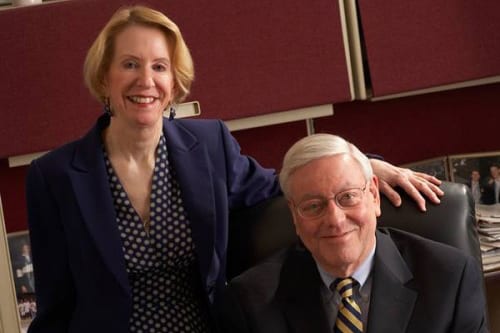
Ronald Glaser, a researcher at the College of Medicine, died April 3 after losing his battle with Alzheimer’s. Credit: Courtesy of Ohio State
Ronald Glaser, an award-winning OSU researcher who linked mental health to the immune system, died April 3 after losing his battle with Alzheimer’s.
Glaser, 80, former director and co-founder of the Institute for Behavioral Medicine Research, came to Ohio State in 1978 to become head of the Department of Medical Microbiology and Immunology, and later married Janice Kiecolt, another faculty member at the time.
Together, their groundbreaking work in the field of psychoneuroimmunology — the study of the correlation between mental health and the immune system — led to a number of scientific grants, including $18 million in NIH funding for Ohio State researchers.
In a statement made to the Ohio State Research Office, Dr. William Malarkey, associate director of the IBMR and director of the Ohio State Clinical Research Center, reflected on Glaser’s work.
“He really got excited about new findings. He came from a ‘hard science’ background and it was unbelievable to him that stress — the ‘soft science’ could have such an impact on what he considered the hard science, the endocrine and immune systems,” Malarkey said. “I don’t think he ever lost that surprise in seeing how these systems talked to one another.”
Throughout his life, Glaser served on countless research committees and held a variety of positions in the College of Medicine. His success helped to bring a previously disputed concept of science into the forefront of social consciousness, and he was most recently featured in The New York Times Magazine.
“Writers know most scientists are excited by their work, but Ron’s excitement was somehow different, almost like a kid unwrapping an unexpected present,” Earle Holland, retired assistant vice president for research communications, said in a statement to the Ohio State Research Office. “Toward the end of my career, when Ron and I would meet to chat about their work, the conversations often strayed from just the science. We had become friends, not just colleagues.”
Glaser also received numerous awards, including the Ohio State Distinguished Scholar Award and was recognized as one of the “World’s Most Cited Authors” by Thomson/Institute for Scientific Information in 2002 after publishing more than 325 scientific papers.
A memorial was held for friends and family on April 8, but his memory will live on through the legacy of care and exploration he left at Ohio State.
“Aside from the hundreds of publications he authored, or the tens of millions of dollars in research funding he earned, it was his ability to lead and inspire others that set him apart,” Holland said.


